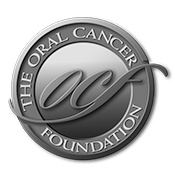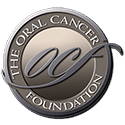Is the cure for oral cancer sitting in your refrigerator? Probably not. However, the odds are that some of the most effective weapons to help prevent cancer (or its recurrence, if you’re a cancer survivor) are as close as your kitchen.
Nobody has all the answers of course. It is very easy to become frustrated after hearing yet another news report about a particular food or substance that causes or prevents cancer; then months later, hearing about the same substance doing exactly the opposite from a different researcher. At times, it’s hard to know what to believe. In spite of this, there are many promising possibilities that merit closer attention. In the battle against cancer, anything that we can do to optimize the strength and effectiveness of our immune system, and provide our own defenses with the tools they need to protect us, is important. Perhaps important enough to stack the odds in our favor.
A rapidly growing number of published studies show that certain groups of food components seem to help prevent cancer and sometimes even assist the body in fighting the disease if you already have cancer. These components are what researchers call chemo-protective agents, including a group commonly known as anti-oxidants; they appear to protect the body from the effects of carcinogenic (cancer-causing) elements. Two examples are vitamins C and E, each known to have anti-oxidant properties. It’s believed that they work by preventing damage at the DNA level. If the DNA is already damaged, they may even help in its repair. Remember that damage to the structure of DNA is the precursor to cells transforming from normal to malignant.
It is not difficult to find good sources of anti-oxidants, in fact they probably are sitting in your refrigerator right now. A diet that incorporates a high level of many common fruits and vegetables can be rich in preventative agents including anti-oxidants, according to the American Cancer Society (ACS). The ACS has recently published a set of nutritional guidelines for cancer patients, including what we know about foods that help prevent cancer. Most all fruits and vegetables are important sources of vitamins and other chemo-preventative elements, and almost all are naturally low in fat and high in fiber. Fruits and vegetables are also rich in a newly explored class of compounds known as phytochemicals (phyto is Latin for plant) thought to have important, healthful properties.

Other anti-oxidants, which are not vitamins, are also found in fruits and vegetables and appear to have powerful cancer-fighting properties. Beta Carotene, a substance which gives some vegetables their color like carrots and peppers, and which the body converts into vitamin A, is one of these.When ingested in a natural state (in a beta-carotene rich food, such as leafy green vegetables, carrots, or bell peppers), it may improve immune responses in the body by stimulating a molecule that helps the immune system target and destroy cancer cells.
In any discussion of the cancer-fighting potential of a healthy diet, it is important to remember that many different foods contain beneficial elements. The new ACS guidelines emphasize the need to eat a varied diet, rather than any one particular food or group of foods. The new guidelines also emphasize the need to limit or control obesity, not only through a decrease in calories consumed, but also through exercise, which strengthens the body and promotes better utilization of any digested nutrients. Animal studies have shown that both fat itself and excess calories likely play a role as cancer promoters. When people consume more calories than necessary to maintain optimum health, it stimulates their metabolic overdrive into making cells divide faster, which increases the risk that something can go awry, resulting in cells with damaged or incorrect DNA.
This is about the point where most people start thinking about taking vitamin supplements as an alternative to planning out a specific, healthy diet. Unfortunately, that may not help as much as you might think. For instance, a study might identify a particular active ingredient in a food which produces the beneficial results. However, it is now believed that that ingredient needs to be consumed in concert with the other vitamins, phytochemicals, and often other components of the food, not normally classified as a nutrient, such as fiber, to be effective. The exact mechanism by which this synergistic benefit takes place is still under study. For example, one study has shown that although pre-menopausal women who ate foods rich in vitamin A and Carotenes appeared to have a reduced risk of breast cancer, women who took only supplements of these same elements did not. Other factors may influence a studies outcome other than what is included in the guidelines for the study. Is it perhaps possible, that those individuals who eat a balanced diet in lieu of the “quick fix” of popping a few vitamin capsules, in general have a higher awareness of living a healthy lifestyle, and that other factors included in that healthier lifestyle, also contributed to the positive outcome.
There are potentially beneficial chemicals in foods that are not exactly nutrients as science understands them. For instance, not only does the compound beta-glycyrrhetinic acid give licorice its distinctive taste, but it has also been shown to be a potent chemo-preventive agent in laboratory animals, even though it’s not a nutrient in the standard sense. We are discovering many more of these types of agents as research progresses. What this all means, is that we are still identifying the numerous variables that provide the benefits which we seek.
The concept of nutrient synergy has led researchers to investigate other types of compounds found in foods. Less traditional elements that have shown promise in the laboratory include the mineral selenium, bioflavenoids (taste compounds), and the cell compound ubiquinone. Selenium appears to work in conjunction with vitamin E to shield host cells from damage. In fact, the body’s natural immune response has been found to be heavily depressed in selenium-deficient animals. A depressed or incompetent immune system is incapable of identifying and destroying the constant assaults that we are exposed to including the precursors to developing cancer.
Bioflavonoids, including those found in apples, onions, tea, and red wine, are now being studied for possible cancer-fighting properties. In one 24-year study, people who ate bioflavonoid-rich foods had a 20% lower risk for cancer. Laboratory and animal studies have even indicated that some of the compounds in green tea might have the capacity to selectively destroy cancer cells (black tea does not appear to do the same). Ubiquinone, a fat-soluble vitamin-like compound that assists in generating energy within our cells, is potentially a highly effective anti-oxidant, according to some early tests. Although it exists naturally in the body, it can also be supplemented by eating beef, pork, mackerel, salmon, sardines, anchovies, and nuts. Much research remains to ultimately determine its true benefits.
Researchers have also found that high levels of soybean consumption are associated with lowered rates of many types of cancers. A chemical derived from soybeans has been found to shrink abnormal growths that lead to oral cancer, according to a UC Irvine College of Medicine clinical study. The Bowman-Birk component is a protease inhibitor, based on a chemical found in soybeans that prevents the enzyme chymotrypsin from breaking down proteins in the body. The mechanism by which it does this is not completely clear, and is currently under investigation. But this process appears to have definite chemo-preventative properties.
Given all this, the safe and logical approach is to eat whole foods that are rich in chemo-protective nutrients and not try to high-dose yourself with an individual component that a current study reports to have beneficial properties. There are real dangers in this approach. Vitamin A and its retinoids are known to have chemo-protective effects.
But if you high dose yourself with vitamin A in an isolated form such as a supplement capsule, you run the risk of developing a dangerously toxic level of it in your body. You can overdose on Vitamin A, but you can’t overdose on spinach – and the spinach is more likely to provide the benefit you’re looking for.
Even though many of these individual substances may help prevent occurrence or reccurrence of cancer, a good diet is even more important for those undergoing treatment for cancer. Radiation and chemotherapy take a severe toll, and a proper diet rich in nutrients is needed to rebuild cells and fortify the body during treatments. Radiation and chemotherapy cause significant collateral damage to the body overall while they are attacking the cancer itself. There is an enormous amount of cellular repair necessary. To accomplish this, the body must have the nutritional building blocks to handle the task. Even here, researchers are presenting some encouraging news. For example, Vitamin E’s powerful anti-oxident properties may help to decrease the toxicity of certain chemotherapy drugs such as Adriamycin, which while an important anti-cancer drug, carries with its use a potential toxicity to the heart. Vitamin E has shown some capacity to decrease the harmful effects of this treatment, without interfering with the treatment itself.
More about diet during cancer treatments
In the end, given all these variables, and the seemingly infinite number of possible combinations of synergistic effects, the benefits of any specific type of diet are very difficult to prove. A published study might focus on a segment of the population given a particular nutrient, but may not consider other lifestyle or genetic factors, which contribute to the studies positive or negative outcome. Participants in studies often “police” and keep track of their own dietary habits and as a result, such surveys may be flawed, or only reflect short-term eating habits. These points are not the norm, but they occur often enough to consider weighing what you hear on the news carefully, and checking with a medical professional before you engage in any particular dietary plan. Other studies are done in the laboratory with animals. While these yield new information, the results may not correctly reflect the effects of the same nutrients on humans. Having considered all of this, one thing is for certain, it is never wrong to eat plenty of fresh fruits, vegetables, and whole grains. These are the primary sources of the nutritious elements your body needs to maintain a healthy and competent immune system, your primary defense against cancer and other illnesses.




